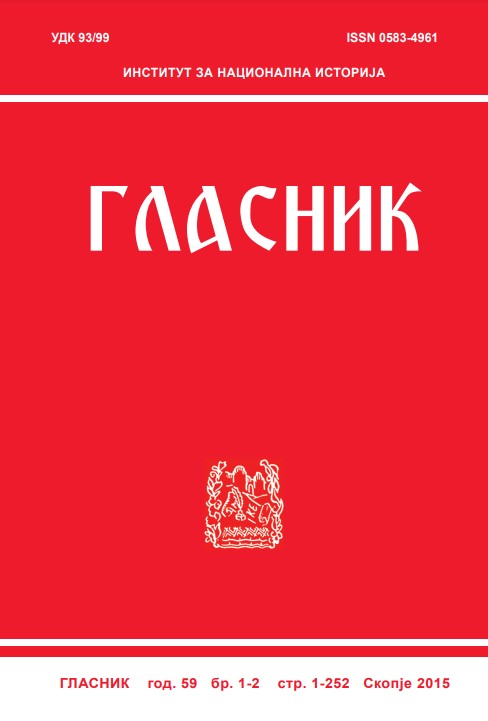БУГАРСКИОТ ЕТНОС И МУЛТИЕТНИЧКА БУГАРИЈА: КОНСТАНТА И ЕВОЛУЦИЈА НА СФАЌАЊАТА ВО ВИЗАНТИСКИТЕ ИЗВОРИ ВО X ВЕК
BULGARIAN ETHNOS AND MULTIETHNIC BULGARIA: CONSTANT AND EVOLUTION OF UNDERSTANDING IN BYZANTINE SOURCES IN THE 10TH CENTURY
Author(s): Stojko StojkovSubject(s): Cultural history, History of ideas, Local History / Microhistory
Published by: Институт за национална историја
Keywords: Byzantine source; Bulgarians; Slavs; ethnicity; ethnonym; politonym; multiethnicity; up-ethnicity; Empire; laos; koinon
Summary/Abstract: The article is dedicated to the ways the Byzantine authors in X century sow Bulgaria and its people from the point of view of ethnicity. According to them Bulgaria was a multiethnic state in which easily differ two ethnicities – Slavs and Bulgars and the second until the end of the century are defined as Turkic people similar to the Hazars, Cumans, Avars and Huns. The term Bulgar(ian)s is used as a general term for the whole population of the state and at the same time as an ethnic term for the population on the territory of nowadays Dobrudzha. It is followed the evolution in the way in which Bulgaria and its population is seen from the moment of the Christianization till the growth into Empire. During this time, the state is seen in a way similar to the way in which the Byzantines are perceived, and the two up-ethnic formations – Byzantines and Bulgarians started to be accepted as the two parts of the God’s people – Israel and Judea. In all moments, parallels are given with the Slavic, Latin and Arab sources.
Journal: Гласник
- Issue Year: 59/2015
- Issue No: 1-2
- Page Range: 65-87
- Page Count: 23
- Language: Macedonian

